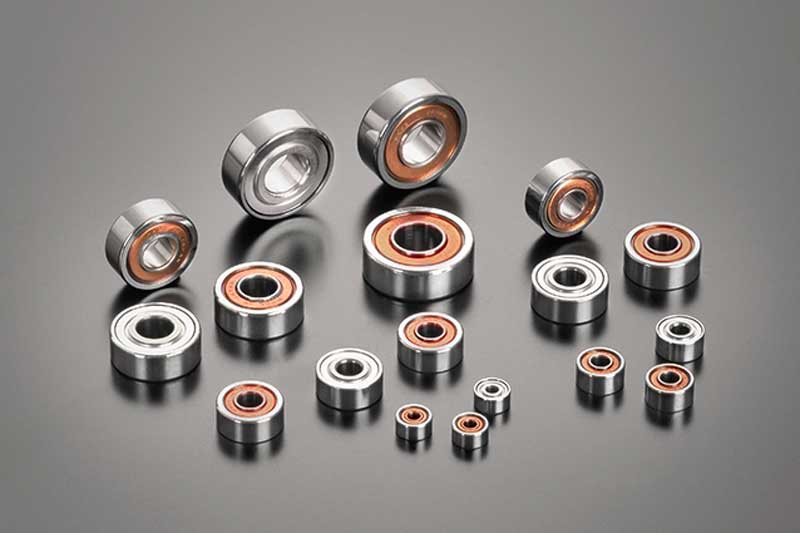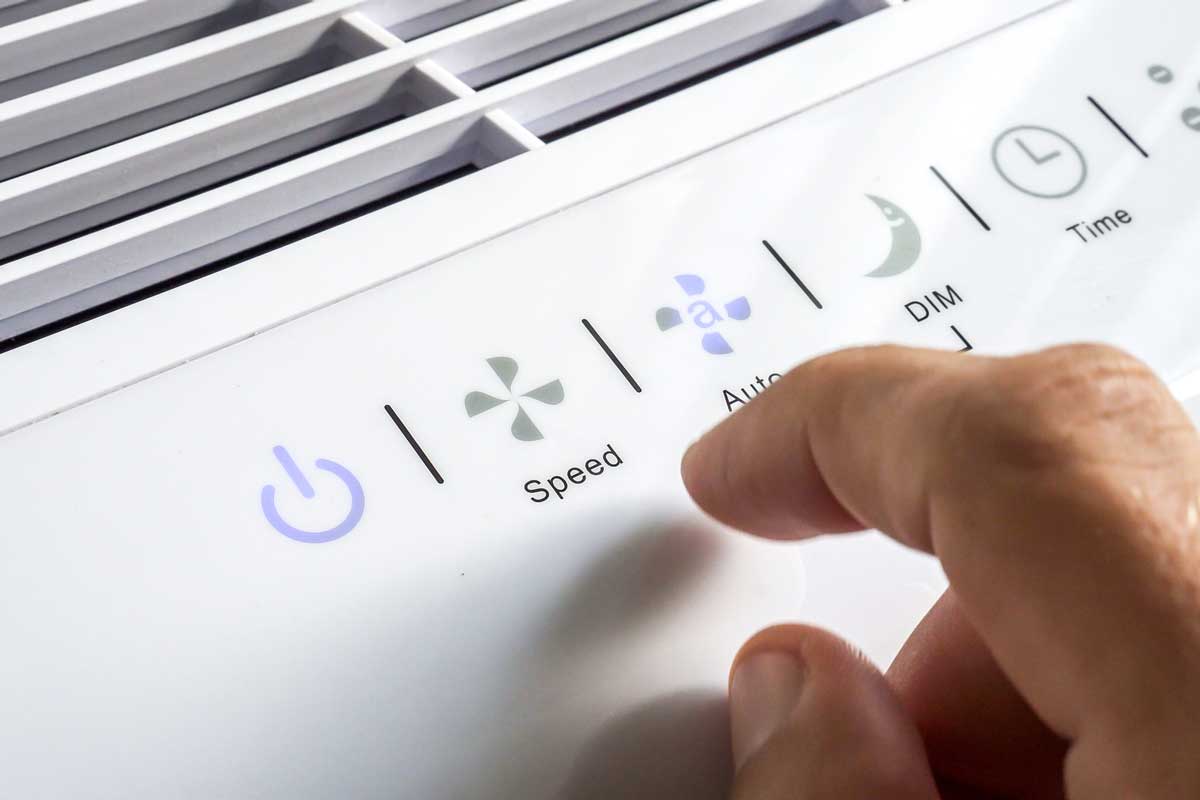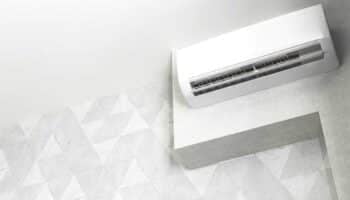We've independently reviewed this article to make sure it's as accurate as we can make it.
To find out more about our article creation and review process, check out our editorial guidelines.
Are you stuck with a portable air conditioner with a broken fan?
Even if it is generating cold air, an air conditioner isn’t great if it’s not pushing the air out and circulating it around your home.
There are several reasons for the fan to stop working on your portable air conditioner. It might be a clogged filter, the fan blades may be warped or stuck on something, or the motor or bearings may be failing. It may also be an electrical issue involving your cord, outlet, circuit, or capacitor.
I’ll go through each of those issues one at a time and provide the steps to fix them. So keep reading.
What You’ll Need
There’s a good chance you won’t need everything on this list. Depending on what problems you find, you’ll need different tools.
- Replacement filter
- Spray bottle, warm water, and mild detergent—dish soap will do
- Soft cloth or brush
- WD-40
- Multimeter
If the Fan on Your Portable Air Conditioner Isn’t Working…

Portable air conditioners have a lot of benefits, but they also have the shortest life span of any type of air conditioner. That means you want to do the best you can to keep up with maintenance. If not, things start to go wrong well before their time.
Like the fan may stop working. If that’s your issue, investigate each of the following until you find and fix the problem.
Let’s start with the most overlooked air conditioner issue.
1- Check Your Air Filter
What does that have to do with the fan!? I can just hear some of you muttering that to yourselves. But the reality is, it has a lot to do with your fan.
You know that the fan is moving air, but did you know that the fan is pushing air through the filter? Depending on the type of motor, your fan may be working harder the dirtier your filter is.
And the harder the fan motor works, the more its lifespan is shortened. To the point where it just may die.
So keeping up with filter maintenance is imperative for the longevity of your air conditioner.
Hopefully, you’ve replaced your filter at least once, but if not, here are the steps. However, note that depending on the air conditioner you own, there’s a chance you need to clean your filter instead of replacing it.
Refer to your owner’s manual to see if you need to clean or replace your filter.
Step 1
Remove the back panel to access the filter
Step 2
Clean with soapy water and let completely dry or replace with a new filter
Step 3
If your air conditioner has more than one filter, be sure to clean or replace all of them
If you want to get any replacement part – or see how much one would cost – click to enter your model number in the search bar below. Our partners at AppliancePartsPros stock almost every part with free guides on how to install them.

2- Clean and Inspect the Fan Blades
If you’ve ever used a desk or floor fan, you know that blades can get very dirty. Sometimes, if something gets stuck in one—hopefully not a finger!—they can get bent or damaged.
And if you had a dirty filter, maybe the fan motor isn’t working anymore. These are all things that could stop your fan from working.
Frankly, there are several things that can go wrong with the fan and its components, so do the following.
Step 1
Unplug your air conditioner
Step 2
Remove the air conditioner’s cabinet as per your user manual
Step 3
Inspect the fan
Step 4
If the fan blades are dirty, dust them off with a soft cloth or brush, and then wash them with warm water and mild detergent — dish soap works
Step 5
With your hand, try to move the fan through one complete revolution
Step 6
If the fan blade meets an obstruction, source the problem. Is there a bent blade or is there damage to the housing around the blades? Fix whatever’s necessary.
Step 7
If everything is in working order at this step, there are a few other things to check with regards to your fan, so don’t reassemble your air conditioner just yet
3- Check Your Fan Motor’s Bearings

If the bearings are shot on the fan motor, your fan won’t operate properly. Follow the steps:
Step 1
If you’re carrying on from the above, do so. If you’re starting here, be sure to unplug your air conditioner before doing anything else.
Step 2
Grab hold of one of the blades and see if the fan jiggles. Not rotates as it should but moves from side to side.
Step 3
If the entire fan part moves, you probably have bad bearings, and your bearings, and possibly your motor, may need to be replaced
Step 4
If, the blades didn’t rotate with ease when you tested them in the previous fan blades section, use a penetrating oil like WD-40 and spray the bearings. Then try rotating the blades again by hand. If they now move with ease, plug in your air conditioner and see if the fan works as it should.
Step 5
Portable air conditioners have a lifespan of 5 to 10 years, so if your unit is reaching end-of-life, you need to consider whether or not it’s worth replacing the motor.
4- Check the Capacitor
If the blades of your fan turned freely when you tested by hand but the fan doesn’t run when the unit is plugged in—but everything else appears to be working—there may be a problem with the capacitor.
The capacitor provides the fan motor with the juice it needs to start. If it doesn’t have enough stored energy, the fan won’t start.
Testing the capacitor is potentially dangerous since it’s high voltage. This should only be done by someone experienced with electrical components.
Step 1
Unplug your air conditioner and remove the cabinet as per the manufacturer’s guidelines
Step 2
Find the capacitor, which is typically a round silver metal cylinder
Step 3
Carefully discharge the capacitor, following the steps in the video below. This is potentially dangerous, so please watch the tutorial.
Step 4
Grab your cell phone and take a picture of the capacitor’s wiring. This way you’ll remember how to reconnect them.
Step 5
Inspect the capacitor to see if it’s bulging, leaking, or showing some visible damage
Step 6
If the capacitor is physically damaged it absolutely does need to be replaced. If you see no visible damage, use a multimeter to test it.
Step 7
With a multimeter on the capacitor setting, use the red and black probes on each of the capacitor’s terminals and compare the reading against the listed ratings for your capacitor
Step 8
If the reading does not match the rating then the capacitor needs to be replaced
If you want to get any replacement part – or see how much one would cost – click to enter your model number in the search bar below. Our partners at AppliancePartsPros stock almost every part with free guides on how to install them.

Conclusion
As we’ve discussed, there are a few situations where your portable air conditioner fan may not be working.
To recap, here’s what you should do to find and fix the problem.
- Check and clean or replace the filter
- Clean and inspect the fan blades
- Check and oil the fans motor bearings
- Inspect and test the capacitor
Any one of those issues could lead to an inoperable fan, so hopefully this information has helped you diagnose and solve your problem.
While you’re here, why not take a look at the related posts below? Perhaps we can help you with something else.







